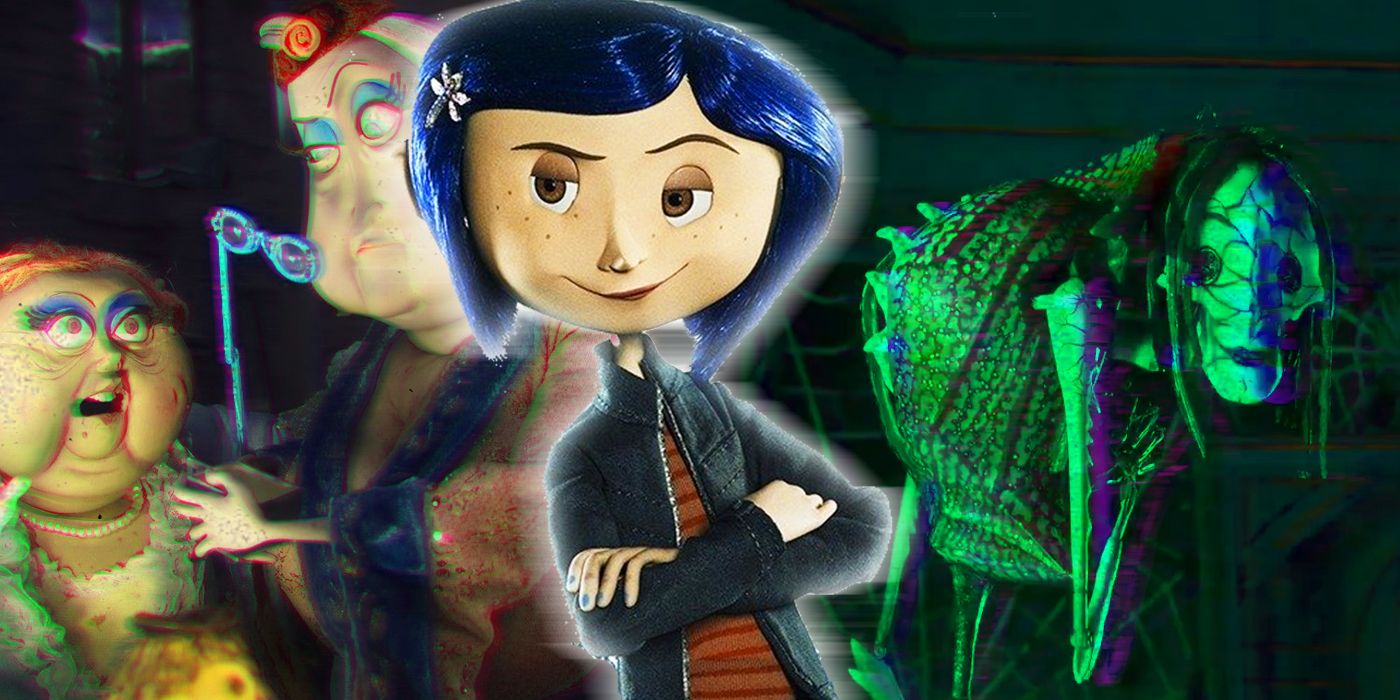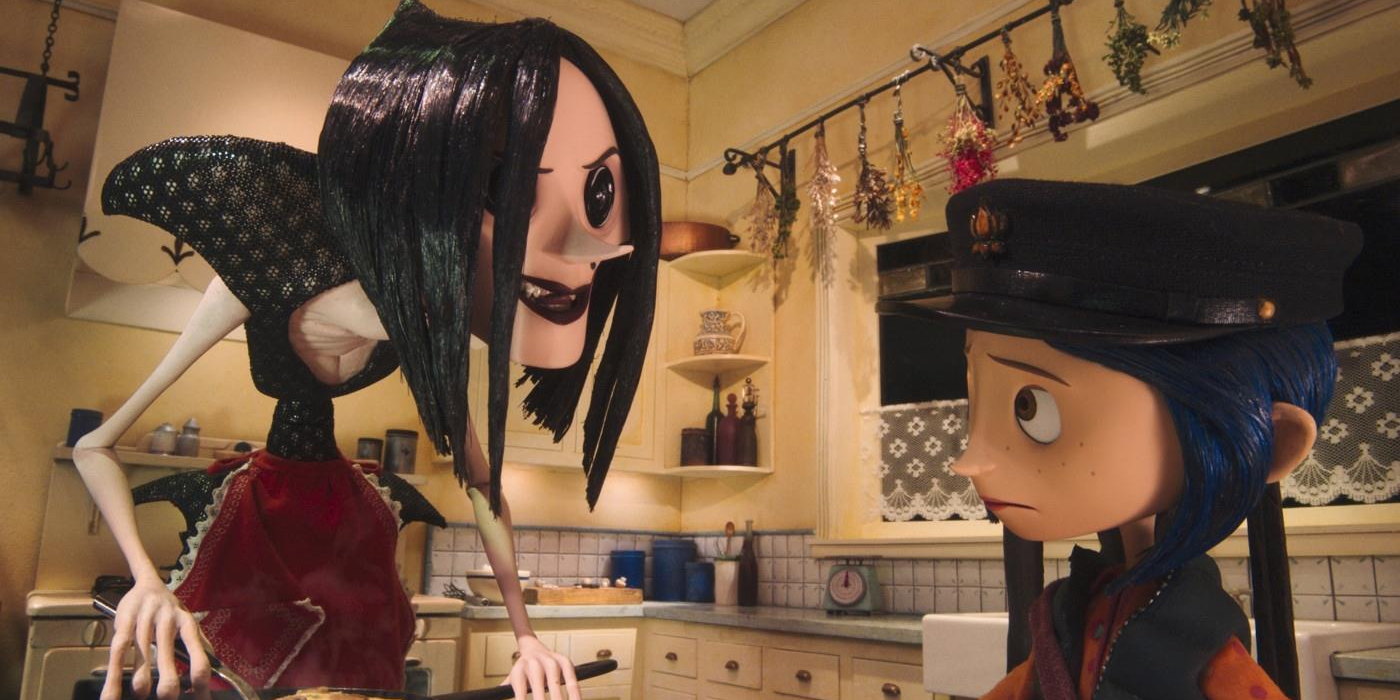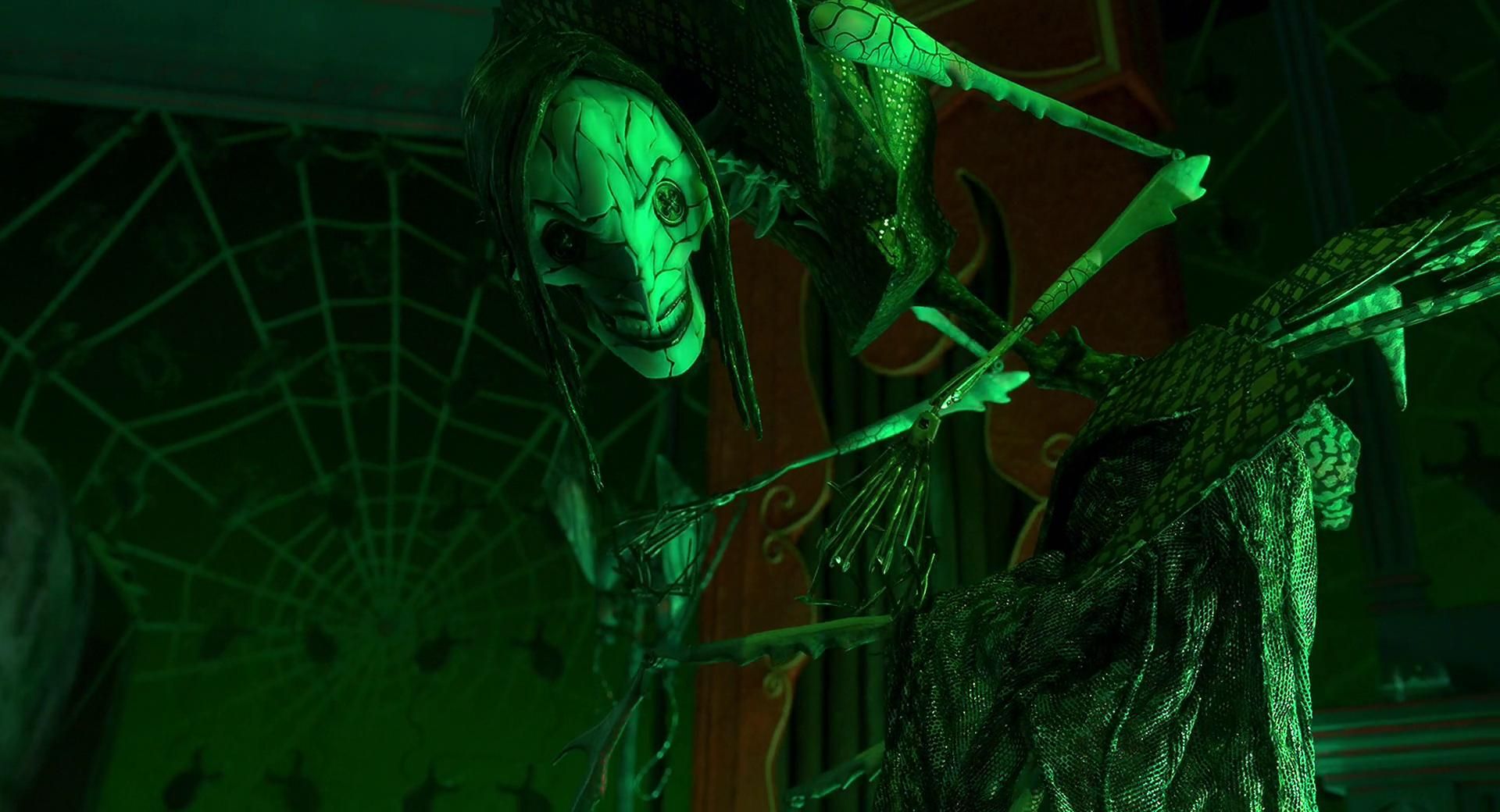
2009’s Coraline has become a modern animated classic, nearly as beloved as director Henry Selick’s groundbreaking The Nightmare Before Christmas. It did so by adhering to the spirit of the Neil Gaiman novel on which it was based, despite shifting the setting from Gaiman’s Great Britain to Selick’s America and making a few other changes. Part of that was the power of its villain, the Other Mother, who lures children into her strange mirror universe before claiming their souls.
The monster was an original creation of the author, but he drew upon a deep tradition of legends and fairy tales to craft her. Moreover, he gave her a name – the Beldam – which speaks volumes about what kind of creature she is. The specifics are informative but unnecessary. The Beldam stems from countless mythic monsters before her, which Gaiman and Selick both tapped into in unique and creative ways.

The word “beldam” means witch or sinister old woman, which fits several common fairy tale tropes. A Beldam was said to dwell in distant hidden houses, much like the gingerbread house of Hansel and Gretel's witch, and often possessed the power to change her shape. She particularly sought young victims, such as children or young lovers who could be easily induced to lower their guard by a pleasing or trustworthy face.
The origins of the word speak to similar types of fairy tale creatures. The phrase “Belle Dame” means “beautiful woman” in French, which has been used to denote a seductive, siren-like quality in works of literature. John Keats’ poem La Belle Dame Sans Merci – translated as “The Beautiful Woman Without Mercy” – presents its title character as a kind of succubus, who lures victims into her clutches to feed off of them. A noble knight falls to her charms, only to be warned by the ghosts of past victims that she is not what she seems. The similarities to Coraline's beldam are such that Gaiman likely had the poem in mind when coining a name for his monster.

In Coraline, the Beldam takes the form of the “Other Mother,” a kinder, happier, more openly affectionate version of Coraline’s own overworked mom. The girl stumbles upon the creature's realm through a door in the living room of the family’s new home, an apartment house they share with several other odd inhabitants. Her “Other World” is a more colorful and entertaining version of the real world, where the adults cater to her every whim and constantly tell her how much they love her. Once Coraline is charmed, the Other Mother offers her the option to stay forever, if only she allows her eyes to be replaced with buttons like the other inhabitants.
Naturally, the Other World is an illusion and the magical life being offered is a trap. Coraline is warned off by the ghosts of the Beldam’s past victims, only to be lured into a final confrontation once the Other Mother abducts her real parents. The pleasant façade gradually falls away in the process, as the Other World rots and the Other Mother grows more angular and sinister. Her world is eventually revealed to be a massive spider’s web, and her true form is spiky and arachnid-like. There appears to be no specific connection between her appearance and the earlier Beldam stories, though a spider is appropriate for a being that sucks the lifeforce out of its victims.
Gaiman intended the monster as a gentle lesson about the nature of love for children. Real parents work hard to keep their kids fed and safe, and sometimes seem like they don’t care in the process. Figures like the Other Mother may offer candy and other treats but have far less benevolent intentions behind them. The Other Mother was a singular take on the concept, fed by folklore and poetry, but invested with a life fully her own. It’s part of what made both the Coraline book and film so memorable, and why the Other Mother feels so familiar despite being a new creation.
0 Comments